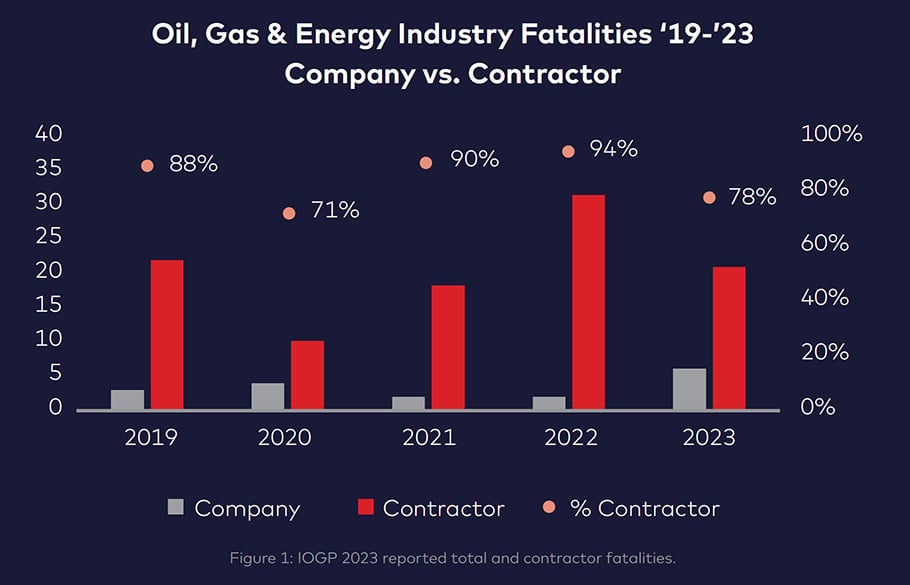Eliminating Contractor Fatalities in Oil, Gas, and Energy
The global oil, gas, and energy sector faces a critical challenge: persistent contractor fatalities, accounting for 78% of deaths in 2023. This trend, consistent since 2019, highlights significant safety vulnerabilities driven by inherent risks, financial pressures, and cultural mismatches. This article proposes a comprehensive safety framework, embedding safety across all contractor stages—from qualification to closeout. By emphasizing strong leadership, rigorous management, and continuous risk prevention, the industry can foster a culture of mutual care, ultimately eliminating fatalities and improving overall performance.

In 2023, the global oil, gas, and energy sector experienced 27 fatalities in 17 incidents (IOGP, 2023). Notably, contractors comprised 78% of these deaths, a trend consistent since 2019.

This data highlights growing safety vulnerabilities in contractor workforces, crucial to energy operations. Despite their business model importance, contractors face persistent risks impacting safety, culture, and performance.
This article examines factors contributing to contractor incidents, analyses challenges, and proposes a safety framework through leadership, management, and risk prevention. This framework embeds safety in all contractor stages: qualification, selection, contract, induction, execution, verification, and closeout, fostering a culture to reduce fatalities and improve performance.
Key Factors Contributing to Contractor Fatalities
A complex interplay of factors drives the alarmingly high rate of contractor fatalities in the oil, gas, and energy industry: the inherent risks of contractor work, intense operational pressures and critical gaps in safety management. Understanding these factors is crucial for preventing future incidents.
- Inherent Risks: Contractors frequently undertake complex, high-risk tasks, from offshore drilling and hazardous material handling to heavy lifting. The constant push for greater efficiency can lead to contractors performing these tasks with fewer resources and less oversight.
- Financial Pressures: Fluctuations in oil and gas prices and the resulting pressure on margins often force companies to cut costs. This can translate to hiring contractors who are paid less or provided with fewer safety resources, creating incentives for risky shortcuts.
- Time Constraints: The highly competitive nature of the industry means tight deadlines and compressed project timelines are common. Contractors may feel compelled to prioritise speed over safety.
- Workforce Instability: High turnover among contractors can result in inadequate training, unfamiliarity with specific work environments, and inconsistent adherence to safety protocols.
- Skill Mismatches: Disparities in contractor qualifications and capabilities, particularly when they don’t match the complexity of the tasks, create significant safety risks.
- Cultural and Leadership Differences: Differences in safety culture, operational priorities, practices, and leadership styles between companies and contractors can lead to dangerous communication breakdowns and lapses in safety procedures.
Authors

